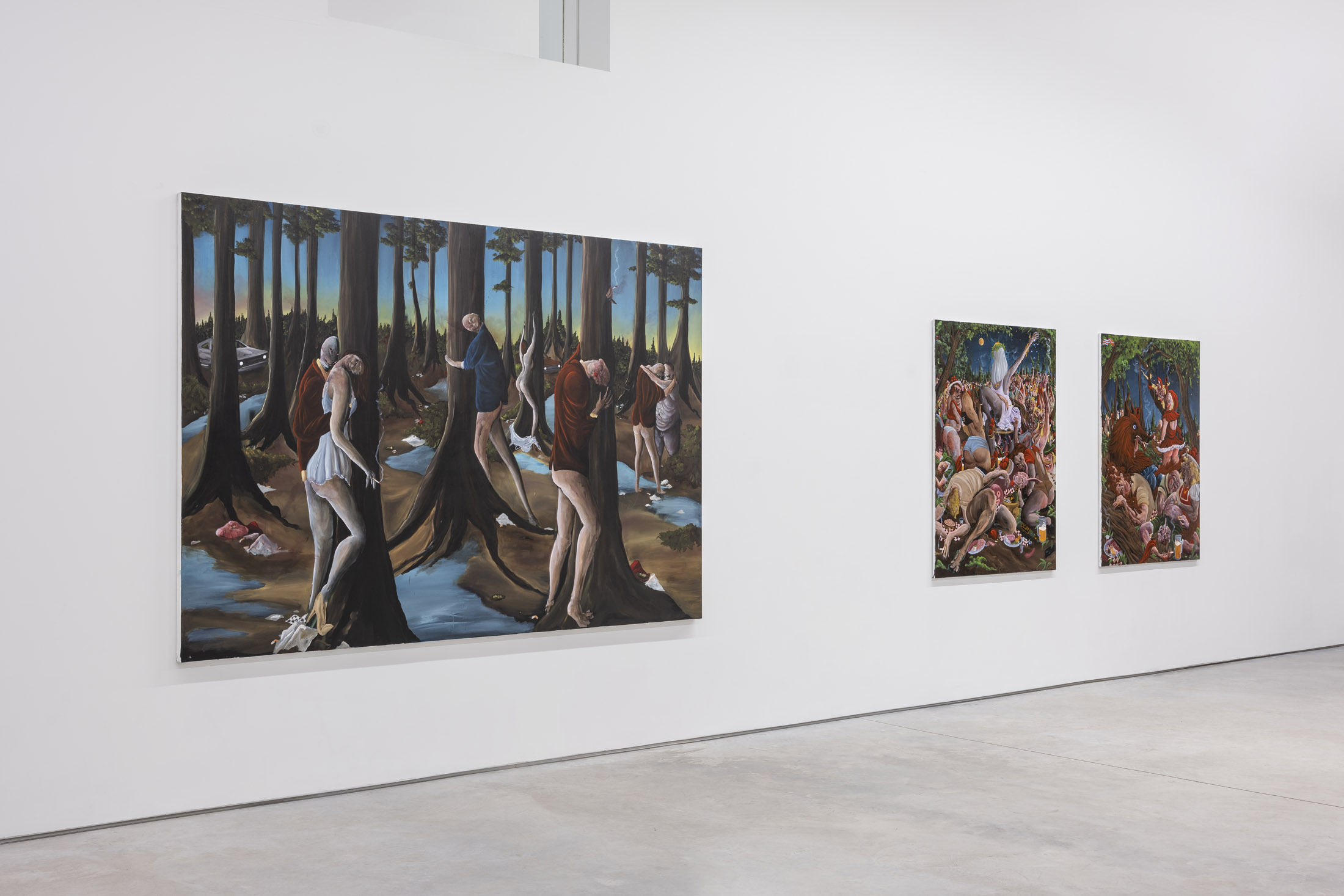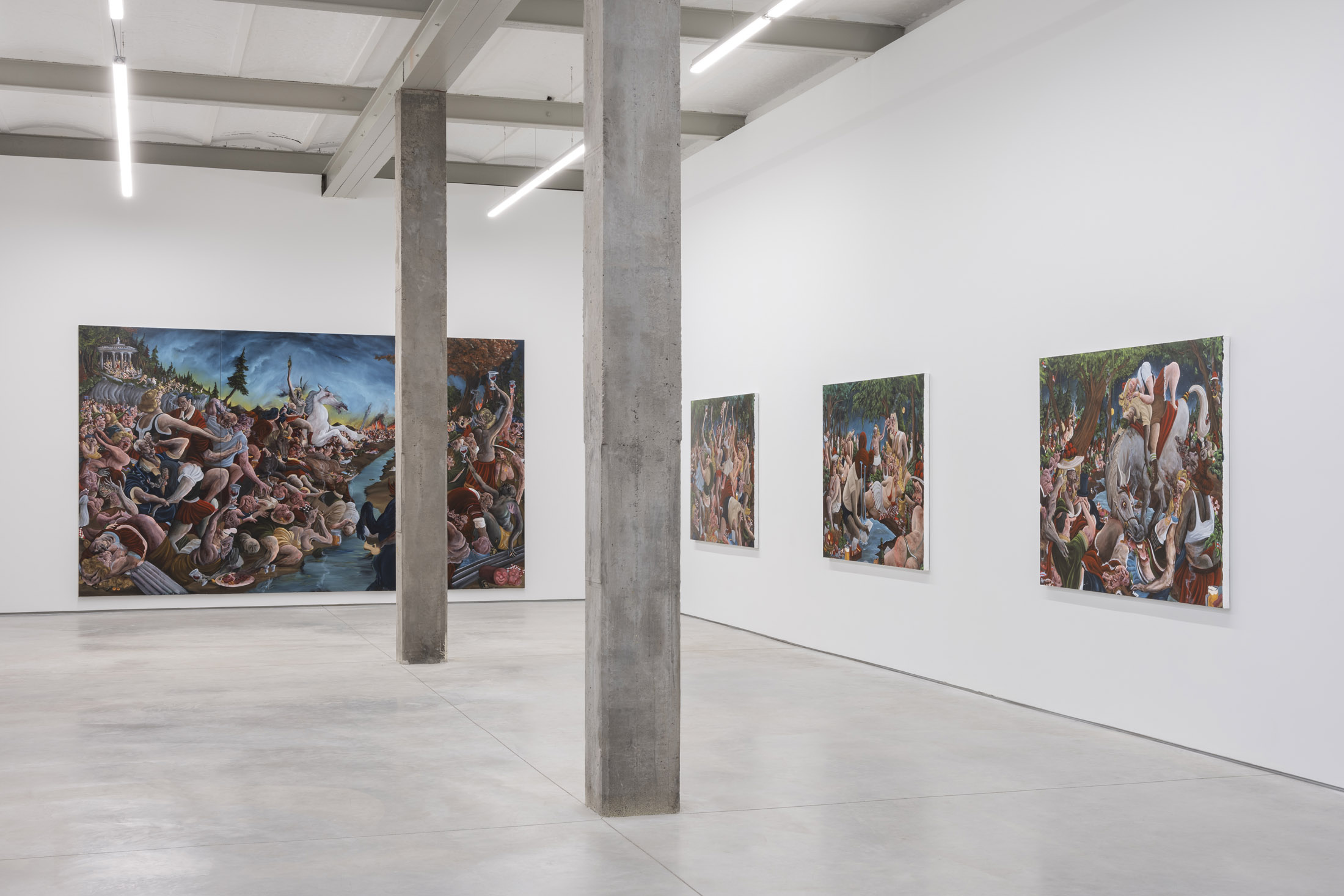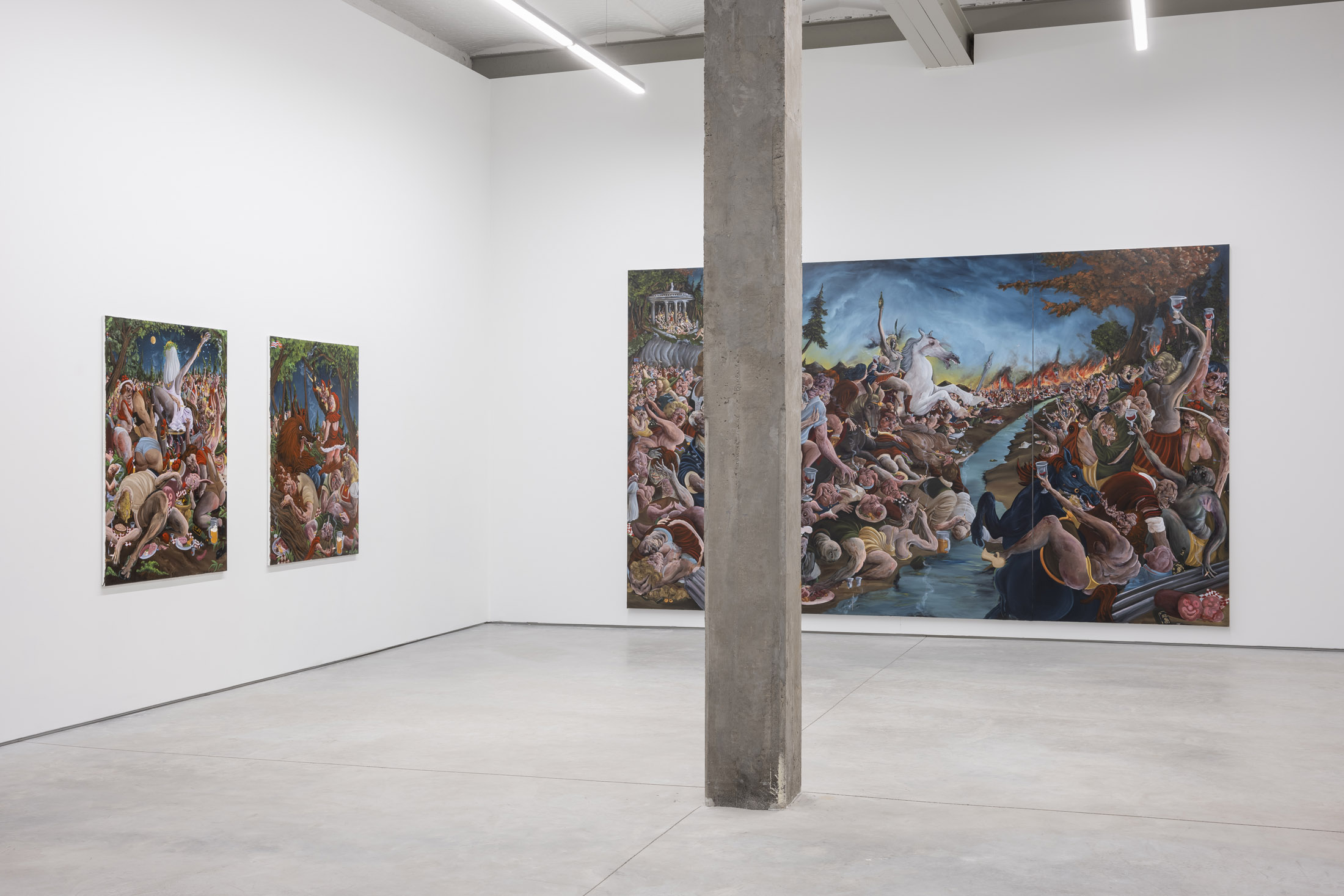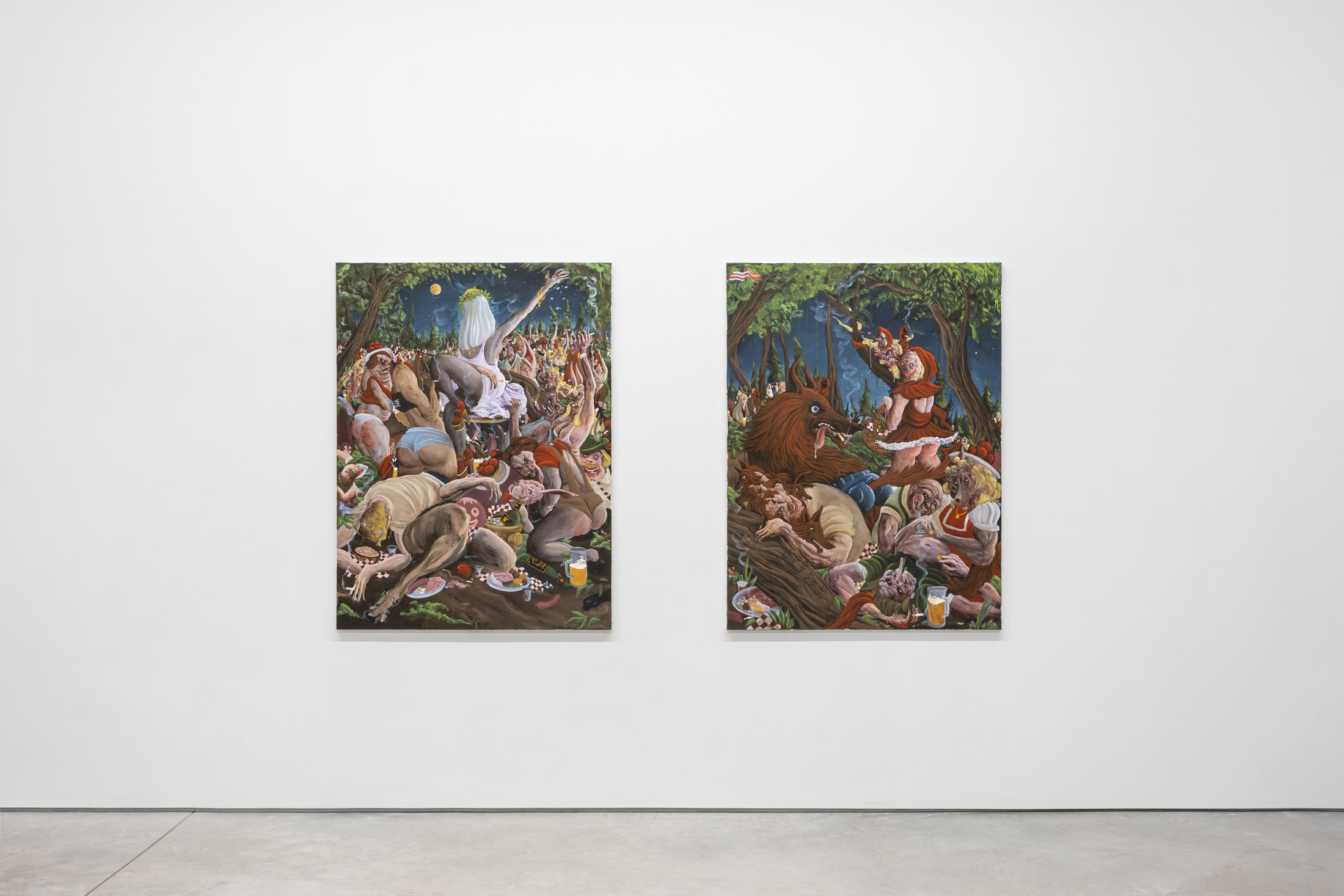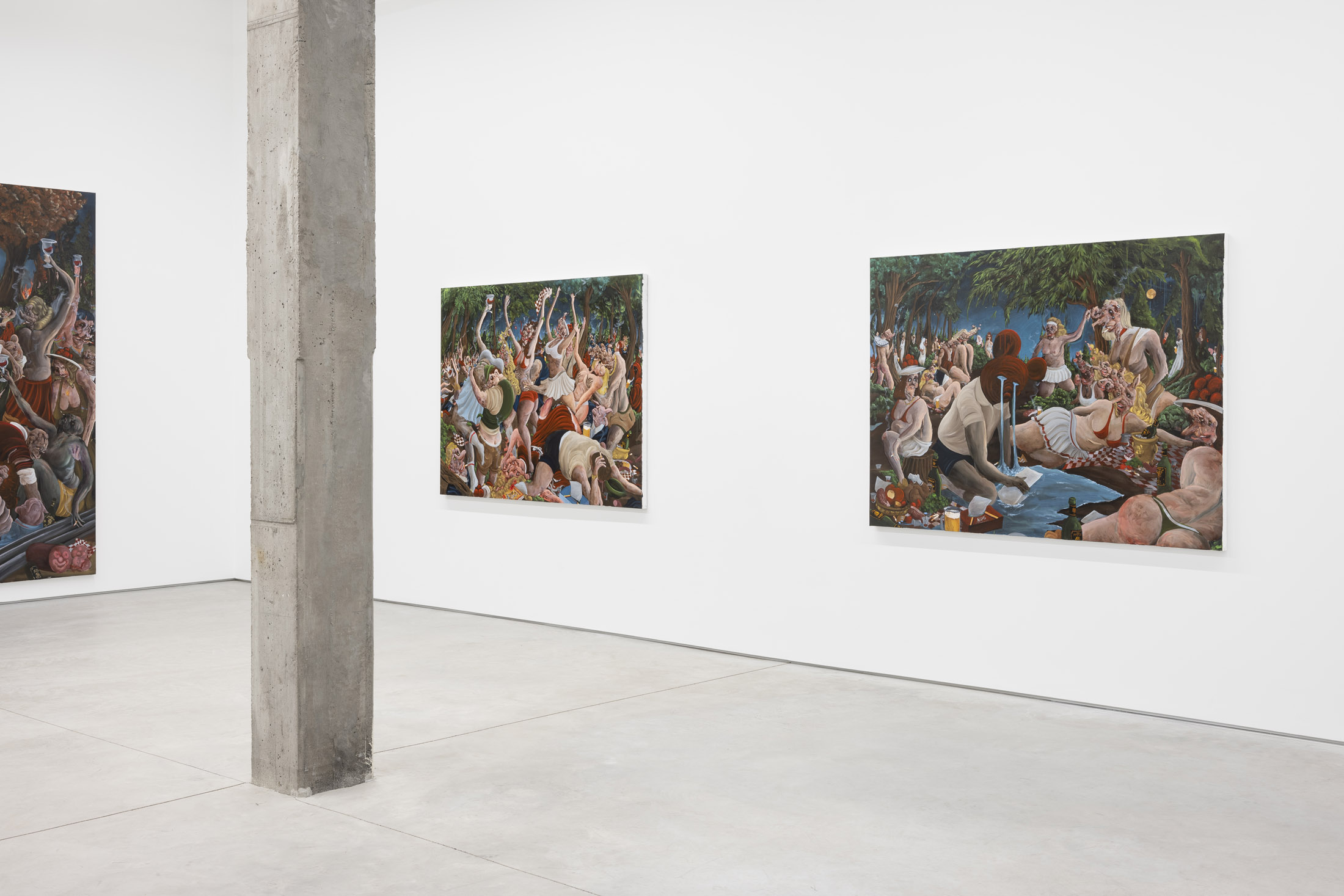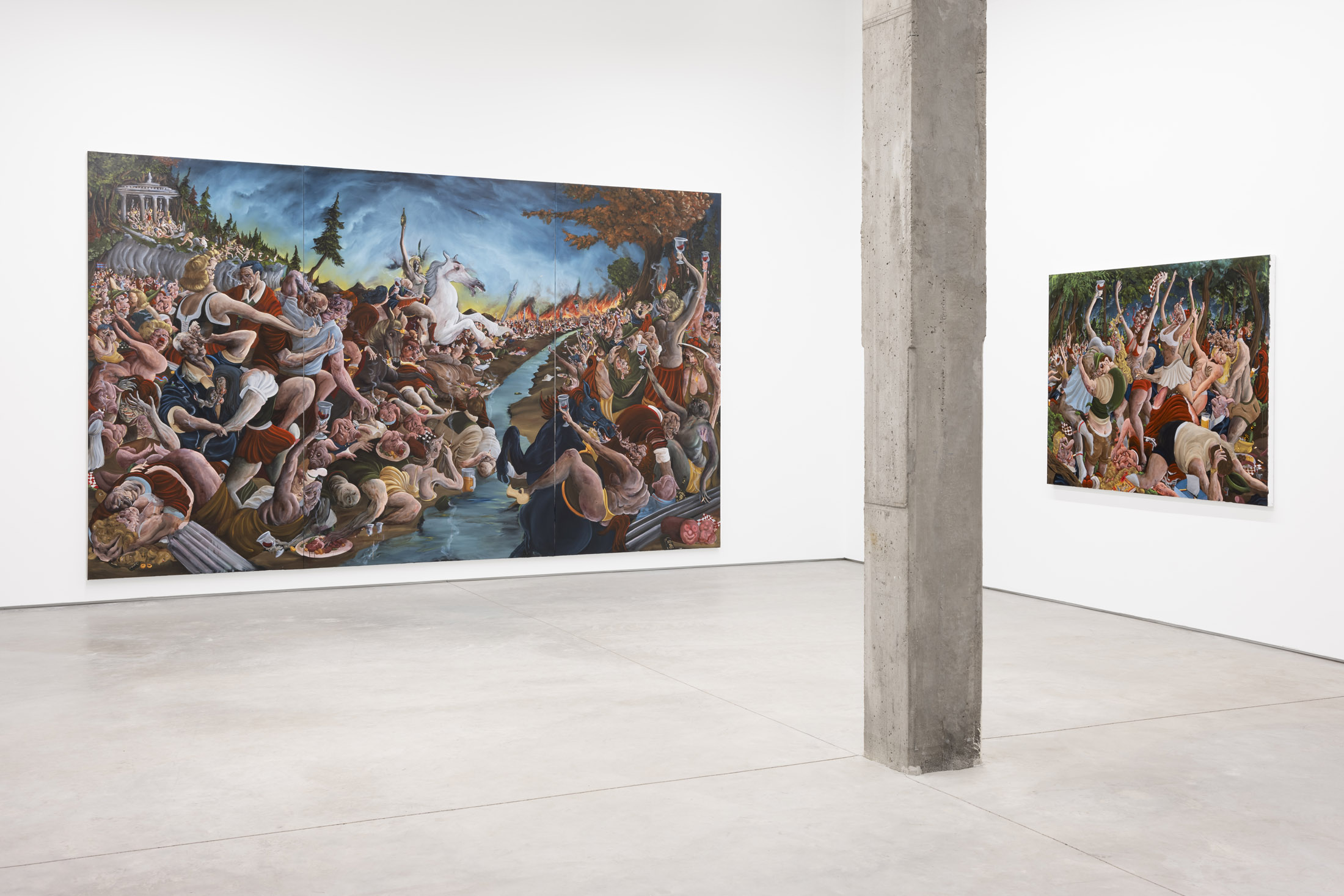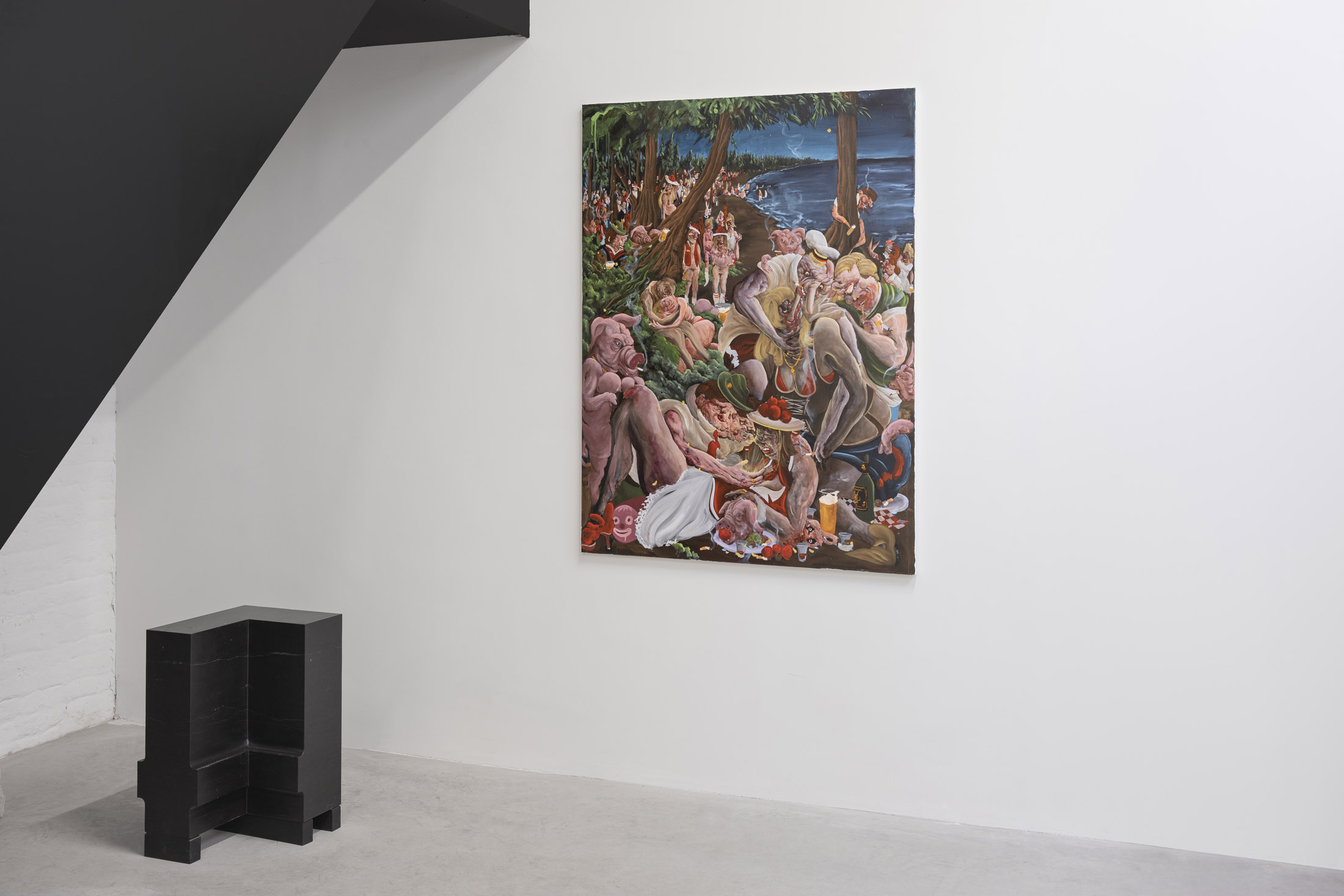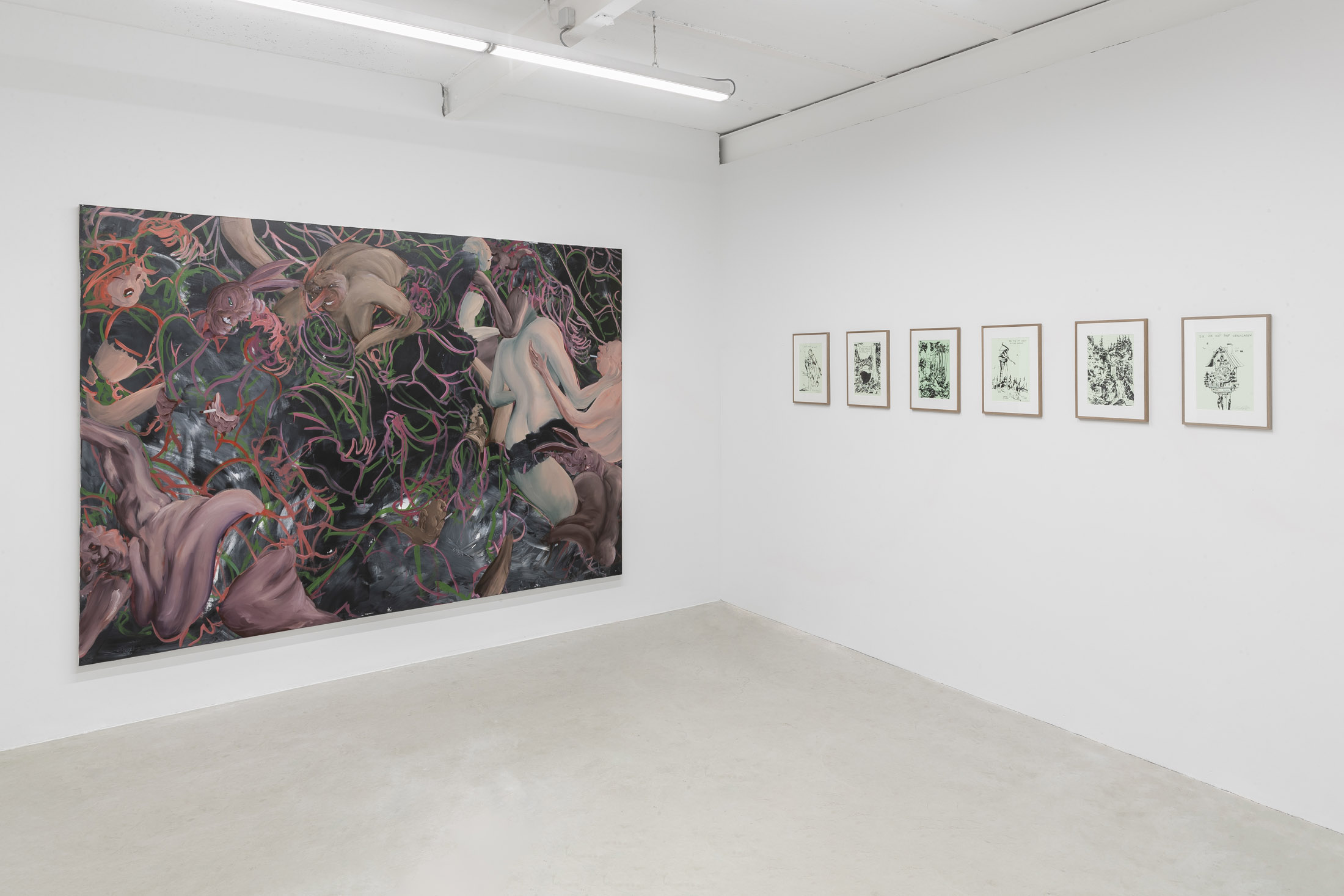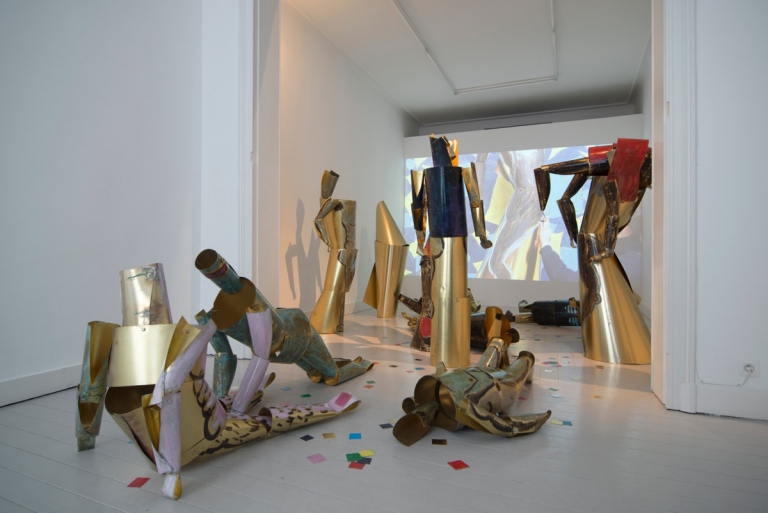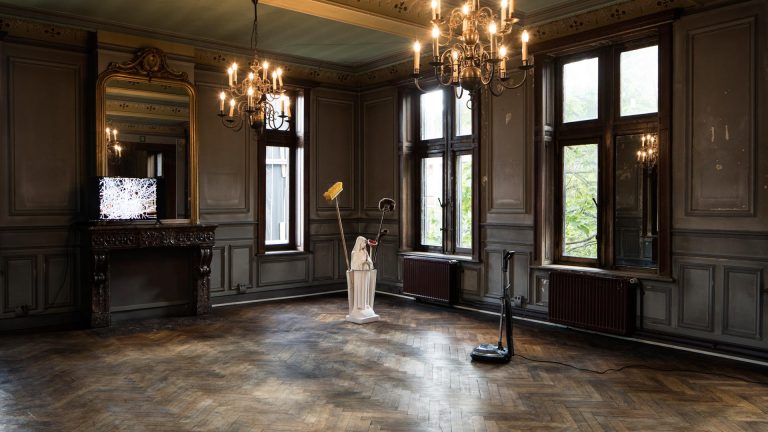Artist: Willehad Eilers
Exhibition title: Schwanzwald
Venue: Harlan Levey Projects 1080, Brussels, Belgium
Date: April 15 – June 3, 2023
Photography: all images copyrighted and courtesy of the artist and Harlan Levey Projects, Brussels
Schwanzwald, Willehad Eilers’ fourth solo exhibition at Harlan Levey Projects, invites the viewer on a party-fueled trip to the Black Forest. A popular tourist destination in the Southwest of Germany, the region is particularly known for its dense forests and traditional culture. For Eilers, the Black Forest is “the most German thing imaginable”. In his universe, the area that directly inspired many of the brothers Grimm’s famous stories thus becomes the perfect stage for a dark fairytale spin-off on excess and German identity.
The centrepiece, Schenket Ein, Den Reinen Wein, opens the show with the legendary battle of the Teutoburg Forest, in which the Romans suffered a devastating defeat at the hands of an alliance of Germanic tribes. Effectively halting their conquest, it separated a territory similar to modern-day Germany from the rest of Europe. This is often cited as being the principal reason German culture is so unique and, as such, the event has been canonised as the birth of the German nation. In Eilers’ version of the subsequent events, gradually unfolding over the surfaces of the other works, characters adorned with Lederhosen and Bollenhutte, a headdress with distinctive woollen pom-poms, feast on sausages, beer, and other typical German food. Even Red Riding Hood and her Big Bad Wolf make an appearance. It all culminates in a carnival of stereotypes that openly questions the notion of national identity.
Eilers’ depiction of his home country is not an idealised one. At times reminding us of the crudeness of fellow German artist Otto Dix, the excessive behaviour of capitalist society is put on full display in all of its ugliness. Though the characters are seemingly having the times of their lives while trapped in a never-ending celebration, their bodies are grossly disfigured, their eyes void. They appear as empty shells chasing a sense of fulfilment that remains unreachable, or, as Eilers puts it: “It is like enjoying a party and closing your eyes for a second, only to open them and see a room full of monsters.”
The personas are all archetypes we’ve seen before, scrolling through the endless abyss of social media applications. At the same time, the work can also be read as a reaction against the state of isolation this digital realm has created. Bodies are pressed firmly against each other, fighting, hugging, arguing, loving, and, above all, always touching. They are like children learning how to engage in basic physical contact.
While fairytales and other German myths are typically infused with moral messages, in Schwanzwald any form of morality has long been abandoned. Claiming that Red Riding Hood has shedded her innocence would be an understatement and even the hunter is lovingly embracing the wolf-grandmother. Most women are wearing the red Bollenhutte, a symbol of a single status and blooming sexuality.
The black version of the hat, reserved for married women, is nowhere to be seen. All genders are engaging in acts that were long – or still are – considered to be indecent. It is a strong statement against the unspoken rules of ‘proper behaviour’ that rule German society. Going back to Schenket Ein, Den Reinen Wein, the divide becomes tangible. The partygoers are not fighting an army of Romans, they are rather engaging in a battle against the judgement of the ‘moral’ people on the other side.
Yet, even in this world, there is no escape from the penalty of sin. As the party knows no end, some of its attendants collapse and are trampled underfoot. Similarly to the 1508 dancing plague of Strasbourg, during which a group of citizens, struck by a sudden mania, kept on dancing until they died, this is a society blindly heading towards its own destruction. Blinded by their own desires, they fail to notice the flames of the approaching fire that is lighting up their skies. For all that, Eilers is no judge, he does not favour either side of the coin. On the contrary, he takes on the role of an observer, capturing the human condition and the tendencies that shape our daily lives.
Willehad Eilers, exhibition view Schwanzwald, Harlan Levey Projects 1080, 2023. Photo Adriaan Hauwaert
Willehad Eilers, exhibition view Schwanzwald, Harlan Levey Projects 1080, 2023. Photo Adriaan Hauwaert
Willehad Eilers, exhibition view Schwanzwald, Harlan Levey Projects 1080, 2023. Photo Adriaan Hauwaert
Willehad Eilers, exhibition view Schwanzwald, Harlan Levey Projects 1080, 2023. Photo Adriaan Hauwaert
Willehad Eilers, exhibition view Schwanzwald, Harlan Levey Projects 1080, 2023. Photo Adriaan Hauwaert
Willehad Eilers, exhibition view Schwanzwald, Harlan Levey Projects 1080, 2023. Photo Adriaan Hauwaert
Willehad Eilers, exhibition view Schwanzwald, Harlan Levey Projects 1080, 2023. Photo Adriaan Hauwaert
Willehad Eilers, exhibition view Schwanzwald, Harlan Levey Projects 1080, 2023. Photo Adriaan Hauwaert
Willehad Eilers, exhibition view Schwanzwald, Harlan Levey Projects 1080, 2023. Photo Adriaan Hauwaert
Willehad Eilers, exhibition view Schwanzwald, Harlan Levey Projects 1080, 2023. Photo Adriaan Hauwaert
Willehad Eilers, exhibition view Schwanzwald, Harlan Levey Projects 1080, 2023. Photo Adriaan Hauwaert
Willehad Eilers, exhibition view Schwanzwald, Harlan Levey Projects 1080, 2023. Photo Adriaan Hauwaert

